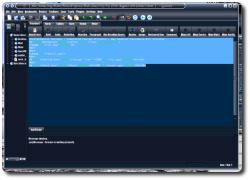
 VER the years I found myself inputting similar commands and/or text time after time, only with slight variations. This yelled out for re-use of some kind. In due time, tt seemed natural for me to keep these quickly-accessible for copying and pasting whenever required.
VER the years I found myself inputting similar commands and/or text time after time, only with slight variations. This yelled out for re-use of some kind. In due time, tt seemed natural for me to keep these quickly-accessible for copying and pasting whenever required.
As of last year, the problem was nearing its end. I began to retain 3 separate text files: one for complex Linux commands (including various Internet address and scripts); one for commands in academia (usually experiments); last and by no means least, I kept together general-purposed text and the like. I refer to the last bit as “common text”, which can be valuable at times. It definitely saves time and prevents typos.
As an example that is based on practice, let us consider one’s personal details. In case a browser’s auto-complete functionality does not work, I open a text file, which resides on my domain. It contains the following arbitrary bits, which fit in commonly-served boxes in most Web forms:
Roy
Samuel
Schestowitz
roy@schestowitz.com
+44 870 xxx xxxx
Manchester University
Imaging Science and Biomedical Engineering
F5-17 Sir Charles Groves Hall, 4 Booth Str. West
Manchester
Lancashire
M15 6PY
How does one use this efficiently? Quick double-click and grafting of the text onto forms is the intuitive approach. It is often a matter of highlighting and mouse-clicking the center button in Linux.
That said, auto-completion sometimes (rather often) works in Mozilla Firefox. It is based on field labels (or captions), but on occasions no suggestions are made. So, working with the template and the form in tandem (e.g. browser tabs or separate monitors) is a method which works admirably well.
Common texts reside on a Webspace to serve my particular needs and there are accompanying keybindings in a personal links portal (example only), which makes access to text even more immediate.
I also store particular signatures for E-mail. These are usually triggered by an event which needs a suitable yet repeatable reply such as:
Please avoid sending me Word or PowerPoint attachments. Word, Excel, and PowerPoint are unreliable, unmaintainable, and unsafe. Send plain text, rtf, pdf, or W3C html instead. See http://www.gnu.org/philosophy/no-word-attachments.html
I grabbed this statement from somebody else whom I spotted in a mailing list. This signature can rapidly be used for unwanted E-mail attachments. Fortunately I only felt compelled enough to use it once in the past. Drawbacks that are associated with proprietary formats are finally beginning to be widely understood here in the United Kingdom. This saves some trouble to all and unburden non-Windows users.
As a side note, I learned this technique from a lecturer whose habit was to keep his frequently-used commands in text files. More complex, multi-line commands are stored locally as scripts, to avoid clutter and to keep everything organised.

 FTER some long experience with a large variety of E-mail clients, I settled on Mozilla Thunderbird. I did so without any hesitation once the application was sufficiently mature. Thunderbird is immaculate: stable, predictable, highly-extensible and even interoperable (including importers and exporters).
FTER some long experience with a large variety of E-mail clients, I settled on Mozilla Thunderbird. I did so without any hesitation once the application was sufficiently mature. Thunderbird is immaculate: stable, predictable, highly-extensible and even interoperable (including importers and exporters).





 Filed under:
Filed under: 
 HOWN above is a screenshot of the Web calender which is closely integrated to my mail. As it turns out, as well as speculated years ago, Google are working on their own implementation. Their Web-based software will actually be called CL2 on the face it. Some
HOWN above is a screenshot of the Web calender which is closely integrated to my mail. As it turns out, as well as speculated years ago, Google are working on their own implementation. Their Web-based software will actually be called CL2 on the face it. Some 
 ILLED with frustration over some recent rotten conducts, I once assembled a few streams of consciousness to compose a bitter essay. It was saturated with citations on the way Microsoft continues to exploit its desktop monopoly-like state-of-affairs. I titled the essay
ILLED with frustration over some recent rotten conducts, I once assembled a few streams of consciousness to compose a bitter essay. It was saturated with citations on the way Microsoft continues to exploit its desktop monopoly-like state-of-affairs. I titled the essay 
 N programming,
N programming, 
 VER the years I found myself inputting similar commands and/or text time after time, only with slight variations. This yelled out for re-use of some kind. In due time, tt seemed natural for me to keep these quickly-accessible for copying and pasting whenever required.
VER the years I found myself inputting similar commands and/or text time after time, only with slight variations. This yelled out for re-use of some kind. In due time, tt seemed natural for me to keep these quickly-accessible for copying and pasting whenever required.
 HIS short essay describes a variety of ways which I have found to increase ‘desktop productivity’. It identifies and covers 3 aspects of customisation, albeit without much obvious connection. Think of them as streams of consciousness.
HIS short essay describes a variety of ways which I have found to increase ‘desktop productivity’. It identifies and covers 3 aspects of customisation, albeit without much obvious connection. Think of them as streams of consciousness.